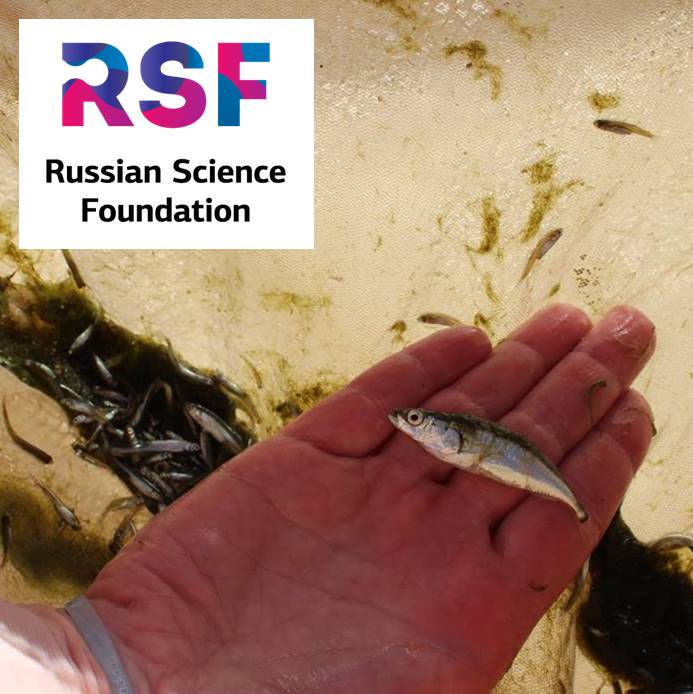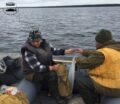
The research group for the study of the threespine stickleback this autumn crossed the equator of their grant from the Russian Science Foundation.
The head of the group, Dmitry L. Lajus, told us how their scientific activities are going on and what they managed to achieve during the project:
Now we are at the equator of the Russian Science Foundation grant 19-14-00092 entitled “Wasp waist” of the Northern Sea Ecosystems: Long-Term Dynamics, Population Structure and Trophic Relationships of Mass Pelagic Fish of the White and Baltic Seas”. This grant plays an important role in the development of our project – at the moment we have already received funding from the foundation, significantly exceeding all external funding that we have been able to receive during the existence of the project since 2006!
Organization-wise, our task is to learn how to use these funds in such a way as to increase the sustainability of our project – after all, we have extensive scientific plans even after the funding of the RSF ends! This project, like our stickleback project as a whole, is to achieve a sufficiently ambitious goal – to better understand the mechanisms of ecosystem change. At the same time, we are trying to achieve this goal with means in line with our limited resources, choosing a few of the most informative species – the “wasp waist” species of the ecosystem.
Science-wise, the idea of the project is to study the three-spined stickleback and herring – fish of low trophic levels, which occupy a key position in the ecosystems of the northern seas – White and Baltic, in order to better understand the mechanisms of ecosystem change. The upper and lower trophic levels of marine ecosystems are usually characterized by a relatively high species diversity, while the intermediate one is occupied with only a few mass species that control the main flows of matter and energy. Therefore, this trophic level is often called the “wasp waist” of the ecosystem. It is most often represented by small pelagic planktophagous fish. Changes in the abundance of these species, therefore, reflect changes in the entire ecosystem, and they can be used as effective indicator species of ecosystem rearrangements.
Within the framework of the project, we study the spatial distribution of stickleback and herring, their long-term dynamics, population structure, intraspecific phylogeography, trophic relationships, behavior, and the influence of parasites. For the analysis, we use a variety of methods – the study of size and age composition of the samples, morphological and molecular genetic approaches, population modeling, analysis of stable nitrogen and carbon isotopes, as well as lipid composition for assessing trophic status, tagging, video and photo registration. We expect that the data obtained within the framework of the project will help to better understand the causes of long-term changes not only in the populations of the studied species, but also in the entire ecosystem, which will allow predicting its responses to climate change and anthropogenic impacts.
In general, the work under the grant is proceeding quite successfully, although, of course, the viral epidemic, also affected them – there were less opportunities to communicate with each other – everything had to be translated online, conferences disappeared, and it became more difficult to carry out field work. But we are trying to minimize these inconveniences and even turn them into advantages – to devote more time to things that for some reason we didn’t have before, in particular, popularizing our project on social networks.
On a smaller scale than planned, we are also doing field work this year. For example, here is a photo of our recent field work
in the Baltic Sea:
and in the White Sea:
We would like to express our sincere gratitude to the Russian Science Foundation and will do our best to ensure that the funding received will benefit the development of environmental research!
Dmitry L. Lajus
















